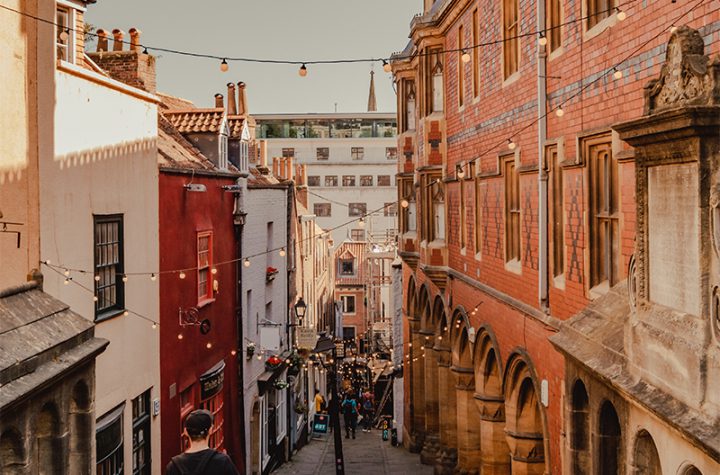
Is your power out or device’s battery charge low? Bookmark CNN’s lite site for text-only top stories.
(CNN)Sally threatened the Southeast with torrential rains and misery Thursday after its floodwaters swallowed up homes, downed power lines and turned streets into rivers in Florida and Alabama.
At least one person is dead and one is missing after Sally blew ashore as a Category 2 hurricane early Wednesday in Alabama, Mayor Tony Kennon of Orange Beach told CNN affiliate WSFA. Its torrential rains and howling winds left more than 510,000 customers without power in Alabama and Florida early Thursday.
Sally is the fourth hurricane to make landfall in the United States this year after Hanna, Isaias and Laura — the most to hit by the same date in 16 years.
It was downgraded into a tropical storm after landfall then further weakened into a tropical depression by Wednesday night. But despite losing strength, flooding remained a concern as it drenched southeastern Alabama and central Georgia on Thursday. From there, it’ll move to South Carolina tonight.
Everywhere it goes, it’s forecast to unleash disastrous flooding.
Florida sees four months of rain in four hours
While Sally has weakened since making landfall, its devastation will be felt in different states. At least eight rivers in southwest Alabama and the western area of the Florida Panhandle are expected to reach major flood stages.
“We had 30 inches of rain in Pensacola — 30-plus inches of rain — which is four months of rain in four hours,” said Ginny Cranor, chief of the Pensacola Fire Department.
Rainfall totals of 10 to 35 inches are possible from Mobile Bay to Tallahassee, Florida, forecasters said.
“My house is full of water, I’ve got two to six inches full of water in my house, everywhere,” Freeport resident Terry Morgan told CNN affiliate WJHG. More homes in the area are surrounded by water.
In Pensacola and other parts of Florida, where rivers approached dangerous levels, and downed trees and power lines made roads dangerous, counties set up curfews to keep residents safe.
Escambia County, which includes Pensacola, asked residents to stay home so crews can evaluate roads and bridges. Local law enforcement will enforce the dusk to dawn curfew for three nights starting Wednesday.
“We are still in an evaluation and lifesaving recovery mission, and we need to be able to do that job,” County Commissioner Robert Bender said. “We are still evaluating our roads and bridges to make sure that it is safe.”
Crews rescued 377 people near the state’s border with Alabama and feared many more could be in danger in coming days, said Jason Rogers, the county’s public safety director.
Florida Gov. Ron DeSantis said the danger is far from over, warning “pretty much any body of water in northwest Florida” could see a rise in levels over the next few days because of Sally.
“There is going to be a lot of a lot of property damage,” he added. “When you see downtown Pensacola, you see three feet of water there, that’s going to affect probably every business that’s in downtown Pensacola — there’s just no two ways about it.”
More than 220,000 customers are without power in Florida, according to poweroutage.us.
Alabama warned to remain vigilant
Sally’s torrential rains led to historic and catastrophic flooding, the National Hurricane Center said. Nearly 290,000 customers are without power in Alabama according to poweroutage.us.
In Gulf Shores, near where the hurricane made landfall, Doris Stiers assessed the damage outside her beach home. She was stunned.
“Looks like a war zone,” she told CNN. “Lots of destruction, homes destroyed, roofs gone. I have not had any service, power or internet. Bad night.”
Orange Beach resident Matt Wilson, who rode out the storm at home, said it was terrifying.
“Our house had windows blow out … and the whole house was shaking like a boat on the water. It was scary man, it really was,” Wilson told CNN affiliate WPMI. “Our dock is obviously gone. Everything on the ground floor is gone.”
Alabama officials warned that even if the storm has weakened, residents should not let their guard down.
“The storm may have exited our local area, but it’s important to remain vigilant since many areas are still affected by lingering flood waters,” the National Weather Service in Mobile tweeted.
What’s next beyond Florida and Alabama
Sally has been downgraded to a tropical depression with sustained winds of about 35 mph. Rainfall is still a significant threat and its risks are not limited to Florida and Alabama.
Mandatory evacuations were ordered for much of the coast and low-lying areas from Mississippi to Florida, and shelters opened to accommodate evacuees.
Southeast Alabama and central Georgia could see 4 to 12 inches of rain, with significant flash flooding possible. Parts of South Carolina are forecast to receive 4 to 10 inches of rain, CNN meteorologist Robert Shackelford said.
Western to central North Carolina and far southeast Virginia could see up to 8 inches in isolated areas, he added.
“We have already seen significant flooding in portions of Alabama from this rain band. Please remember, turn around don’t drown,” the National Weather Service in Atlanta tweeted.
In addition to the rain, there’s a slight risk for severe weather throughout Sally’s path with isolated tornadoes possible,” Shackelford said.
Sally came ashore 16 years to the day that Category 3 Hurricane Ivan struck roughly the same areas.
CNN’s Nicole Chavez, Jason Hanna and Tina Burnside contributed to this report.





More Stories
US president-elect Joe Biden has listed four priorities for his forthcoming presidency. These include Covid-19, economic recovery, racial equity and climate change.
What are the restrictions within Victoria and the border closures with NSW and Queensland? How far can I travel, and how many people can I have over at my house? Untangle Australia’s Covid-19 laws and guidelines with our guide
Apple has suspended new business with supplier Pegatron after the Taiwan-based original equipment manufacturer misclassified student workers. Apple also said Pegatron broke its Code of Conduct for suppliers. In a statement provided to Bloomberg, Apple said, “…